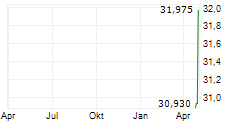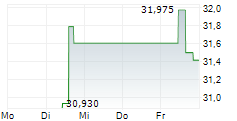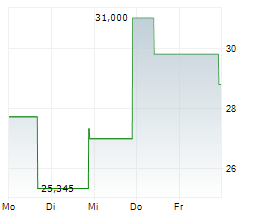HONG KONG, June 30, 2025 - (ACN Newswire) - As the freshly made tea industry faces increasing competition, Chagee is strategically launching a value-driven upgrade in tea culture. Official data shows its new flagship line, 'CHAGEE NOW', focused on freshly brewed teas, has expanded to 11 stores in Shanghai. Unlike traditional milk teas, CHAGEE NOW features Chinese-style teas and tea lattes, signaling what analysts believe could be a shift in how Chagee anchors its brand value.
Not Just Tea - Chagee Enters Coffee's Lane
Data shows that the growth of China's new-style tea market slowed to 6% in 2024 and is projected to decline further to just 1.5% by 2028. While brands like Heytea and Nayuki remain focused on the premium segment, and Gu Ming (Good Me) and Cha Bai Dao (ChaPanda) compete fiercely within the 10-20 RMB price range, Chagee is carving out a new track, aiming not for milk tea consumers' spare change, but for the daily routines where coffee dominates.
This reflects the core strategy outlined by Chagee founder Zhang Junjie: 'a meticulous benchmarking of Starbucks'. It also underscores the brand's unique value proposition in the capital market' blending distinctive Eastern tea offerings with Starbucks-level scalability to position itself as the world's next everyday beverage, alongside coffee.
From a data perspective, Chagee has a solid foundation for its strategy. Not only is its product widely welcomed, but the supply chain also provides strong support for operational efficiency. According to its Q1 2025 financial report, even under the pressure of increased store density, Chagee's average monthly GMV per store in Greater China reached RMB 432,000, significantly exceeding the industry average for tea brands. The brand's supply chain efficiency further reinforces its position. With a focused product strategy and high level of standardization, its inventory turnover cycle is just 5.3 days, whereas many other tea brands take over 50 days.
Chagee's strong store-level performance and efficient supply chain continue to power its rapid expansion, consistently outperforming industry peers. As of March 31, 2025, Chagee had grown to 6,681 stores worldwide. While short-term fluctuations in per-store GMV are expected as store density increases, the long-term growth trend remains firmly upward, particularly in mature markets, where same-store sales are still rising at a 20% pace. This pattern echoes Starbucks' own trajectory: during its 2013-2015 densification phase, GMV also wavered, but the brand soon returned to stable double-digit growth.
The 'Eastern Starbucks' Takes Shape: Chagee's Global Ambitions Gain Momentum
Market analysts suggest that once Chagee successfully repositions itself as a high-frequency, essential alternative to daily coffee consumption, its global growth potential could expand significantly. Notably, Chagee began its globalization journey as early as 2019 and has already achieved impressive results.
Data shows that Chagee's business model and product offering have been successfully validated in Southeast Asia. In Singapore, the brand's average monthly GMV per store has reached RMB 1.8 million, well above its domestic performance. Its first store in Jakarta, Indonesia, sold over 11,000 cups in just the first three days. Meanwhile, in Malaysia, Chagee plans to open 300 new stores over the next three years.
Meanwhile, Chagee's North American debut is drawing strong anticipation. Its first Los Angeles store opened in April 2025, introducing 'tea lattes' tailored to local coffee culture'and sold over 5,000 cups on opening day.
As of March 31, 2025, Chagee had 169 overseas stores, generating a total GMV of RMB 178 million in international markets for the first quarter, an impressive year-over-year surge of 85.3%. Overseas growth is becoming a key indicator for capital markets evaluating Chagee, prompting a shift in how the company is being valued. For reference, when Starbucks saw over 30% of its revenue generated from international markets, its price-to-earnings (PE) ratio increased from 20x to 35x. In comparison, Chagee's current PE ratio of 15x highlights a considerable valuation gap given its global growth potential.
The capital market's perception of Chagee's valuation is still evolving'It can no longer be seen as just a milk tea brand'. Market projections indicate that transitioning from a leisure beverage to a daily coffee alternative could unlock more than tenfold growth in user potential.
As Chagee steadily advances its global expansion, its dual-track valuation story--rooted in its positioning as a coffee alternative and its ambition to achieve Starbucks-level scale--is gaining growing recognition across the market. Amid a broader pullback in traditional freshly made tea valuations, Chagee is just beginning to lead a new wave of value redefinition in the tea industry.
Copyright 2025 ACN Newswire . All rights reserved.
Not Just Tea - Chagee Enters Coffee's Lane
Data shows that the growth of China's new-style tea market slowed to 6% in 2024 and is projected to decline further to just 1.5% by 2028. While brands like Heytea and Nayuki remain focused on the premium segment, and Gu Ming (Good Me) and Cha Bai Dao (ChaPanda) compete fiercely within the 10-20 RMB price range, Chagee is carving out a new track, aiming not for milk tea consumers' spare change, but for the daily routines where coffee dominates.
This reflects the core strategy outlined by Chagee founder Zhang Junjie: 'a meticulous benchmarking of Starbucks'. It also underscores the brand's unique value proposition in the capital market' blending distinctive Eastern tea offerings with Starbucks-level scalability to position itself as the world's next everyday beverage, alongside coffee.
From a data perspective, Chagee has a solid foundation for its strategy. Not only is its product widely welcomed, but the supply chain also provides strong support for operational efficiency. According to its Q1 2025 financial report, even under the pressure of increased store density, Chagee's average monthly GMV per store in Greater China reached RMB 432,000, significantly exceeding the industry average for tea brands. The brand's supply chain efficiency further reinforces its position. With a focused product strategy and high level of standardization, its inventory turnover cycle is just 5.3 days, whereas many other tea brands take over 50 days.
Chagee's strong store-level performance and efficient supply chain continue to power its rapid expansion, consistently outperforming industry peers. As of March 31, 2025, Chagee had grown to 6,681 stores worldwide. While short-term fluctuations in per-store GMV are expected as store density increases, the long-term growth trend remains firmly upward, particularly in mature markets, where same-store sales are still rising at a 20% pace. This pattern echoes Starbucks' own trajectory: during its 2013-2015 densification phase, GMV also wavered, but the brand soon returned to stable double-digit growth.
The 'Eastern Starbucks' Takes Shape: Chagee's Global Ambitions Gain Momentum
Market analysts suggest that once Chagee successfully repositions itself as a high-frequency, essential alternative to daily coffee consumption, its global growth potential could expand significantly. Notably, Chagee began its globalization journey as early as 2019 and has already achieved impressive results.
Data shows that Chagee's business model and product offering have been successfully validated in Southeast Asia. In Singapore, the brand's average monthly GMV per store has reached RMB 1.8 million, well above its domestic performance. Its first store in Jakarta, Indonesia, sold over 11,000 cups in just the first three days. Meanwhile, in Malaysia, Chagee plans to open 300 new stores over the next three years.
Meanwhile, Chagee's North American debut is drawing strong anticipation. Its first Los Angeles store opened in April 2025, introducing 'tea lattes' tailored to local coffee culture'and sold over 5,000 cups on opening day.
As of March 31, 2025, Chagee had 169 overseas stores, generating a total GMV of RMB 178 million in international markets for the first quarter, an impressive year-over-year surge of 85.3%. Overseas growth is becoming a key indicator for capital markets evaluating Chagee, prompting a shift in how the company is being valued. For reference, when Starbucks saw over 30% of its revenue generated from international markets, its price-to-earnings (PE) ratio increased from 20x to 35x. In comparison, Chagee's current PE ratio of 15x highlights a considerable valuation gap given its global growth potential.
The capital market's perception of Chagee's valuation is still evolving'It can no longer be seen as just a milk tea brand'. Market projections indicate that transitioning from a leisure beverage to a daily coffee alternative could unlock more than tenfold growth in user potential.
As Chagee steadily advances its global expansion, its dual-track valuation story--rooted in its positioning as a coffee alternative and its ambition to achieve Starbucks-level scale--is gaining growing recognition across the market. Amid a broader pullback in traditional freshly made tea valuations, Chagee is just beginning to lead a new wave of value redefinition in the tea industry.
Copyright 2025 ACN Newswire . All rights reserved.
© 2025 JCN Newswire



